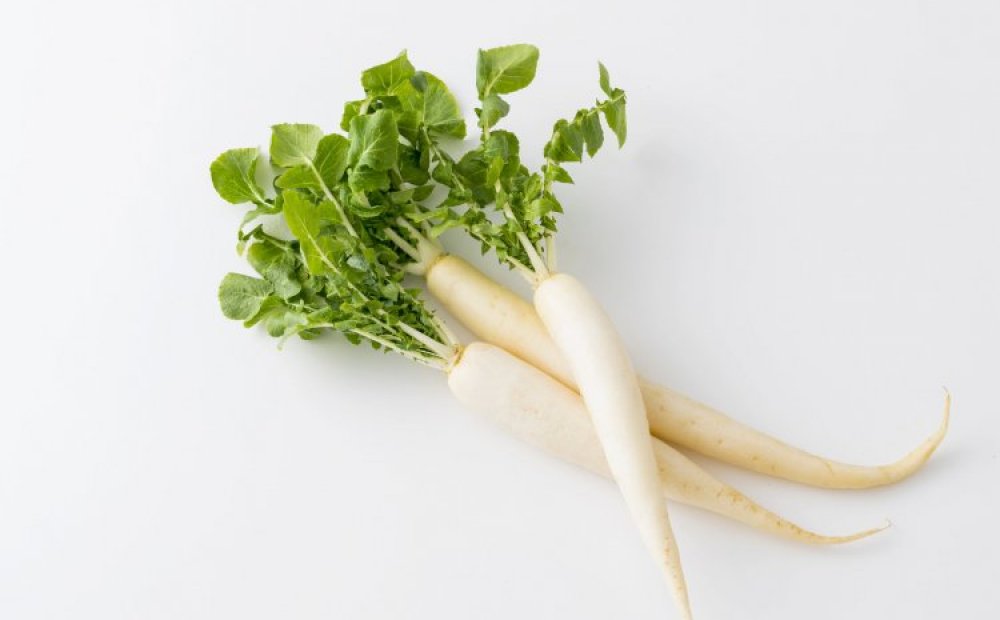TOKYO'S AGRICULTURE, FORESTRY, AND FISHERIES SITE
- Tokyo's natural riches TOKYO GROWN
- Kameido Japanese Radish
Kameido Japanese Radish
- Characteristics of Kameido Daikon
- A short root length of around 30 cm and a wedged tip characterize Kameido Daikon. It was cultivated in the vicinity of Kameido Katori Jinja (Shinto shrine) from the Bunkyu era (1860 – 1864) to the early Showa period (1926 – 1989). The land in this area, located in the Arakawa river basin, is made of fertile clay-rich soil said to be good for growing daikon. This variety was widely cultivated especially in the Meiji period (1868 – 1912), when it was known by various names such as Okame Daikon and Otafuku Daikon. It was renamed Kameido Daikon after its production area in the early Taisho period (1912 – 1926). Every March, the “Fukuwake Matsuri” festival is held at Kameido Katori Jinja to offer Kameido Daikon to the shrine. The root, stalks, and leaves have a delicate flavor that is not too distinctive and a crisp texture that makes exceptional asazuke (lightly pickled vegetables).
| Name | Kameido Japanese Radish |
|---|


